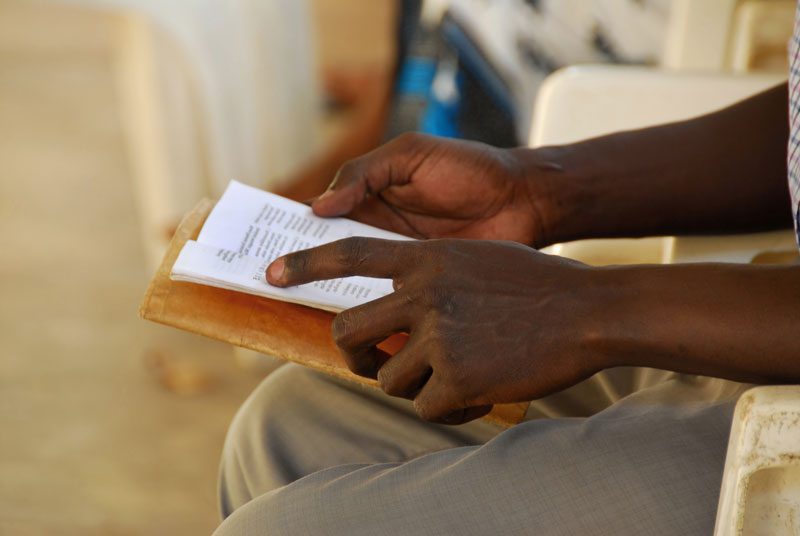John Stott Finishes His Race
by Gary Corwin
Corwin focuses on three things that impress him most about Stott’s engagement with mission issues.
Dr. John R. W. Stott has, without doubt, been among the most widely known and highly respected voices of evangelical faith for the last fifty years. A steady stream of tributes to his multi-faceted life and work rapidly filled the media upon his death. Although they had many different emphases, all seemed to share a respect and love for his humility, gentleness, and genuinely Christ-like character. It is interesting in this regard that, like his Savior, he never lived far (always within eight miles in Stott’s case) from his place of birth, yet had a profound impact on the world.
I will focus on three things that impress me most about Stott’s engagement with mission issues: (1) the serious and Bible-centered way in which he addressed the Church’s task in mission; (2) his patient, precise, and enduring labor that resulted in the Lausanne Covenant; and (3) his passion for leadership training and equipping, particularly leadership for the churches of the Global South.
Bible-centered approach to the task of mission. As a consummate biblical exegete and expositor, Stott applied his mental energies to addressing several of the pressing issues of his day. In Christian Counter-Culture (1978, The Message of the Sermon on the Mount), he expounded a culture-challenging point of view that set the pace for a generation of gospel laborers (myself included) regarding what it means to be salt and light in cultures running away from Christ.
In Christian Mission in the Modern World (1975), Stott advanced the view that John 20:21 is the pre-eminent articulation of the Great Commission, over against the more common focus on Matthew 28:18-20. “As the Father has sent me, so send I you …” became for many under his influence the rallying cry for more holistic mission (i.e., pursuing mission as Christ did, including unapologetic ministry to human need as an equal but separate partner to proclamation evangelism). While some of his views have not been without controversy, this particular emphasis found eloquent and balanced presentation in what must be considered his missiological magnum opus, the Lausanne Covenant.
Role in writing the Lausanne Covenant. It is no exaggeration to assert that the Lausanne Covenant may be the most important evangelical document created in the twentieth century. That it is also a mission-oriented document, and a document primarily authored by Stott, says a great deal about the man’s importance to the mission enterprise in the last fifty years.
The logistics of creating the Lausanne Covenant called for the guiding hand of a remarkable writer, exegete, missiologist, and patient diplomat. The 3,000-word document was submitted in draft form to the 2,430 Lausanne I participants from 150 countries, and suggested revisions were invited. Hundreds were forthcoming. Working tirelessly and using practically all the gifts he possessed, Stott pulled it all together in such a way that before the gathering adjourned, 2,200 participants had signed it.
The Lausanne Covenant has enjoyed remarkable staying power since 1974. It has been translated into more than twenty languages and has been adopted as the unifying bond of cooperation for hundreds of churches and para-church groups, and a number of national and regional associations and movements. It, more than anything, has provided the glue that has kept the Lausanne Movement itself going forward. Stott was also the author of The Lausanne Covenant: An Exposition and Commentary (1975), the unchallenged treatment of the subject.
Passion for leadership training and equipping. This would be impressive even if one were looking only on the transformation that took place over a number of decades in the pastoral leadership of the Church of England. The work that he andJ. I. Packer did in mentoring evangelical clergy for that denomination to a large extent changed its face. While still a minority within that body, they are now a very substantial one.
Stott also lectured at theological colleges and seminaries all over the world. My own experience of him was at Trinity Evangelical Divinity School in the 1970s, where in addition to his avid bird watching, I especially remember a New Testament lecture series he did one week of evenings. Unlike most preachers today, Stott stood quietly and almost motionless behind his lectern with his glasses perched on the end of his nose. He kept the entire audience on the edge of their seats, entranced by the simple but elegant profundity of his exegesis and application.
Perhaps most significant have been his efforts to develop leaders, especially younger ones, to the highest levels of scholarship for the churches of the Global South. His Langham Trust and the Evangelical Literature Trust have both been wonderfully used to advance this cause. John R. W. Stott will be greatly missed, but the race that he ran will not soon be forgotten.
….
Gary Corwin is associate editor of EMQ and staff missiologist with the international office of Serving in Mission (SIM).
EMQ, Vol. 48, No. 1, pp. 4-5. Copyright © 2012 Evangelism and Missions Information Service (EMIS). All rights reserved. Not to be reproduced or copied in any form without written permission from EMIS.




